Estimates suggest that human settlement of the Australian continent started between 42,000 and 48,000 years ago, potentially due to people migrating across land bridges and making brief sea crossings from what we now know as Southeast Asia. The Europeans would eventually discover the continent, transforming it into a penal colony for British criminals around 1788. Since that time, Australia has experienced significant socioeconomic transformations, becoming one of the globe’s wealthiest nations. However, one constant remains – Australia is home to some of the world’s most hazardous animals. It’s a fact that Australia is on par with Africa when it comes to its assortment of deadly and venomous creatures. In spite of this, if we go by the country’s death statistics, the most dangerous animals to humans in Australia are surprisingly horses, generally as a result of riding accidents. However, sharks, spiders, and snakes still tend to dominate the headlines with their threatening reputations. Today, we’ll introduce you to 25 of Australia’s most menacing creatures, which you would likely be wise to avoid.
And if you’d like to learn about other dangerous animals take a look at these 25 Dangerous Animals That Are Deceptively Cute.
Reef stonefish
 Source: australiangeographic.com.au, Image: Wikipedia
Source: australiangeographic.com.au, Image: Wikipedia The reef stonefish’s incredible ability for camouflage is ridiculous! Often looking like an encrusted rock or lump of coral, the species is widely distributed throughout tropical, marine waters of the Indo-Pacific region. It has stout dorsal fin spines that can inject an extremely poisonous venom capable of killing a human if it goes untreated.
Redback spider
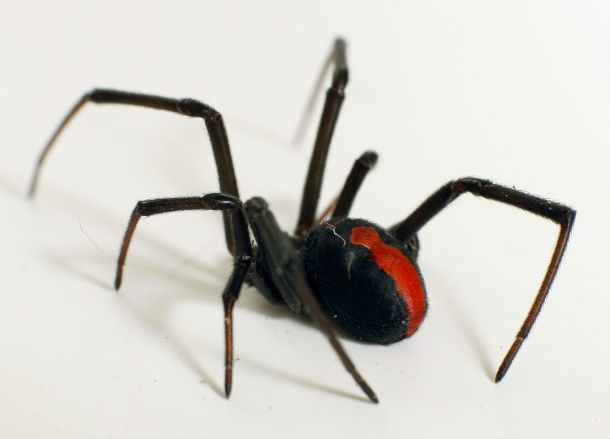 Source: australiangeographic.com.au, Image: Wikipedia
Source: australiangeographic.com.au, Image: Wikipedia Redback spiders are found throughout Australia and are common in disturbed and urban areas. It belongs to the Theridiidae family, which is found worldwide. The notorious black widow spider of the United States is a close relative of the redback, and only differs in appearance by the absence of a red dorsal stripe.
Inland taipan
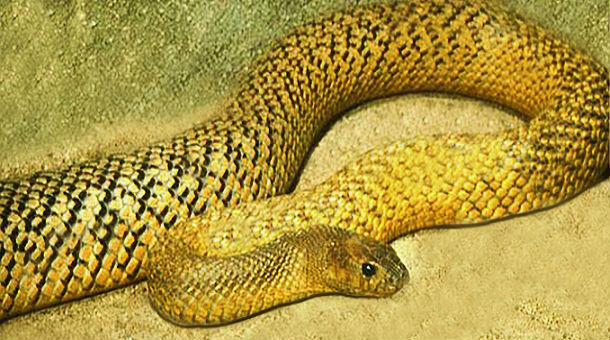 Source: australiangeographic.com.au, Image: Wikipedia
Source: australiangeographic.com.au, Image: Wikipedia Often cited as the world’s most venomous snake, the inland taipan is far from the most dangerous. Unlike its congener, the common and fiery-tempered coastal taipan, this shy serpent is relatively placid and rarely encountered in its remote, semi-arid homeland. Make no mistake, though, if you get bitten by one your life is definitely in danger!
Highland copperhead
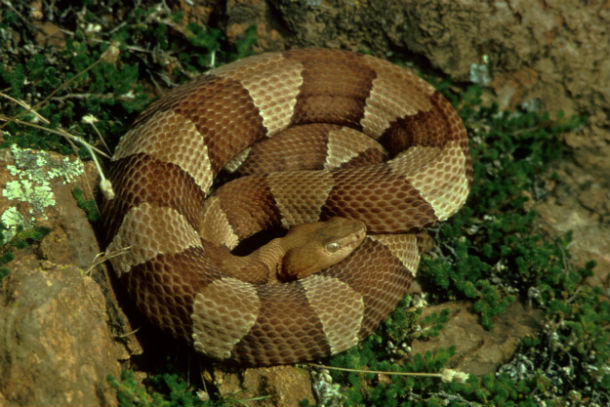 Source: australiangeographic.com.au, Image: Wikipedia
Source: australiangeographic.com.au, Image: Wikipedia Copperheads have managed to eke out an existence in some of the coldest high-rainfall regions of Australia, where most other snakes would perish. Their venom is hemolytic, meaning it destroys the red corpuscles of the blood and releases the hemoglobin into surrounding fluids. Though normally not fatal, their bite is extremely painful and causes significant damage to muscle and bone tissue.
Collett’s snake
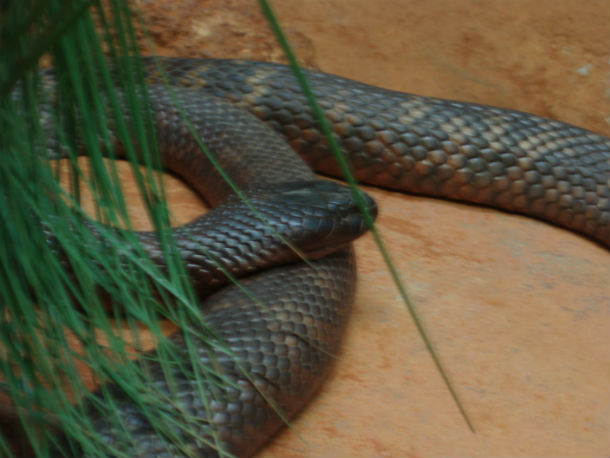 Source: australiangeographic.com.au, Image: Wikipedia
Source: australiangeographic.com.au, Image: Wikipedia One of the most spectacularly colored snakes in Australia, Collett’s snake is a shy and rarely seen inhabitant of Queensland’s black soil plains. However, if you are unlucky enough to be bitten by one you have to rush to the nearest hospital because its poison can kill you pretty quickly.
Common lionfish
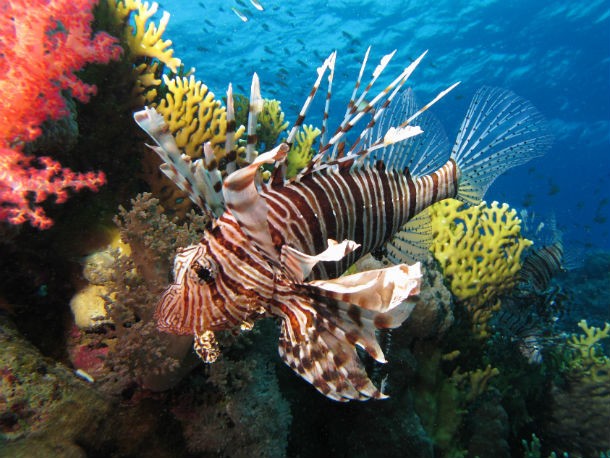 Source: australiangeographic.com.au, Image: Wikipedia
Source: australiangeographic.com.au, Image: Wikipedia The common lionfish is a tropical species found widely throughout the Indo-Pacific region. In Australia it’s found in southwestern Western Australia, around the north of the country and in the south to the southern coast of New South Wales. It’s considered to be an extremely venomous fish. The venom found in the needle-sharp dorsal, pelvic and anal fins, though not necessarily deadly to an otherwise healthy human being, will cause an immense amount of localized pain, swelling and, in some rare cases, death if not treated properly.
Bluebottle jellyfish
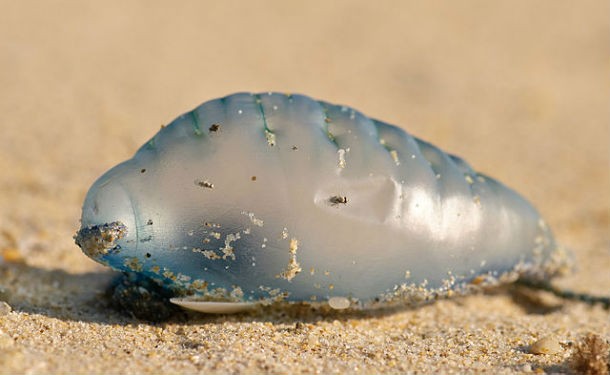 Source: australiangeographic.com.au, Image: Wikipedia
Source: australiangeographic.com.au, Image: Wikipedia Though rarely deadly, a Bluebottle sting can be dangerous to children, elderly people, people who suffer from asthma and people with allergies as it can cause fever, shock, and respiratory distress. Medical attention is sometimes necessary, especially if there is: intense and persisting pain, an extreme reaction, a rash that worsens, a feeling of overall illness, a red streak developing between swollen lymph nodes and the sting, or if either area becomes red, warm and tender.
Yellow-bellied sea snake
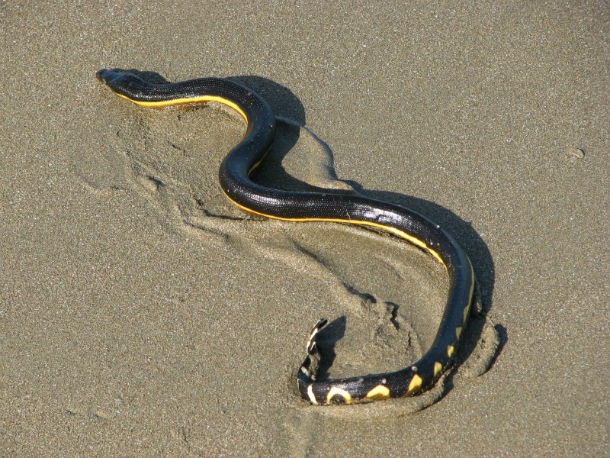 Source: australiangeographic.com.au, Image: Wikipedia
Source: australiangeographic.com.au, Image: Wikipedia The highly venomous yellow-bellied sea snake is the most widely distributed snake in the world, as well as the most aquatic, never having to settle on land or the seafloor its entire pelagic life. It is a species of sea snake found in tropical ocean waters, and is particularly famous in Australia where it spreads terror every summer to swimmers and surfers alike, since its bite has been usually deadly in most of the cases.
Great white shark
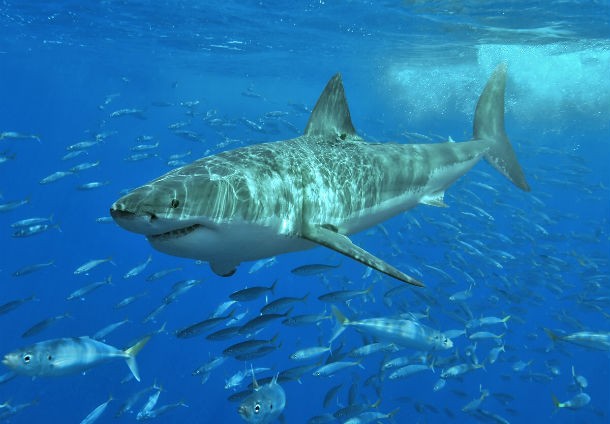 Source: australiangeographic.com.au, Image: Wikipedia
Source: australiangeographic.com.au, Image: Wikipedia The great white shark is one of the most famous and feared species of shark not just in Australia but anywhere in the world near the sea. Though responsible for fewer attacks than other members of its family such as the bull shark and tiger shark, the great white has the reputation of having one of the meanest bites in the shark world thanks to it’s incredible set of razor sharp teeth which can easily tear flesh apart.
Tiger snake
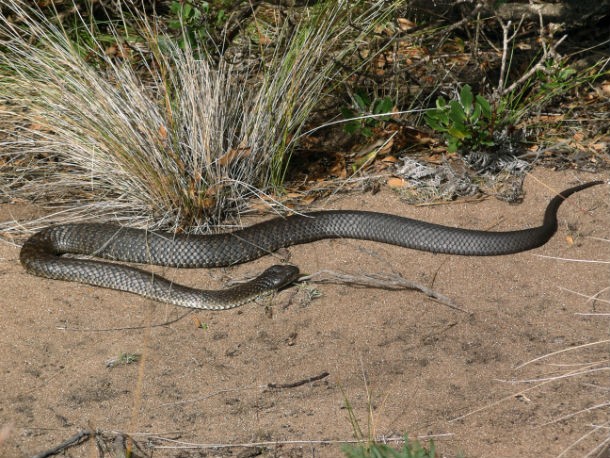 Source: australiangeographic.com.au, Image: Wikipedia
Source: australiangeographic.com.au, Image: Wikipedia Most Australians know of tiger snakes and are aware of their fearsome reputation, though few will ever encounter one. Unfortunately, this species is much maligned because of its aggressive nature and toxic venom; however, the tiger snake should be recognized as a great survivor, superbly adapted to some of the most inhospitable environments in Australia.
Tiger shark
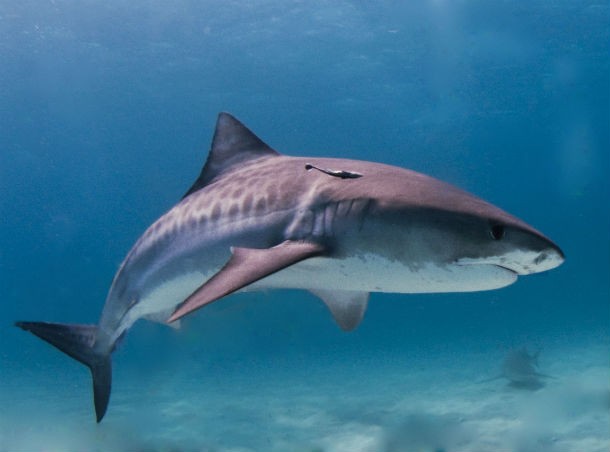 Source: australiangeographic.com.au, Image: Wikipedia
Source: australiangeographic.com.au, Image: Wikipedia The tiger shark is a species of requiem shark and the only living member of the genus Galeocerdo. Commonly known as the “sea tiger,” the tiger shark is a relatively large macro predator, capable of attaining a length over five meters (sixteen feet). It is found in many tropical and temperate waters, and it is legally to blame for many attacks on humans (especially surfers) in the waters off Australia.
Red-bellied black snake
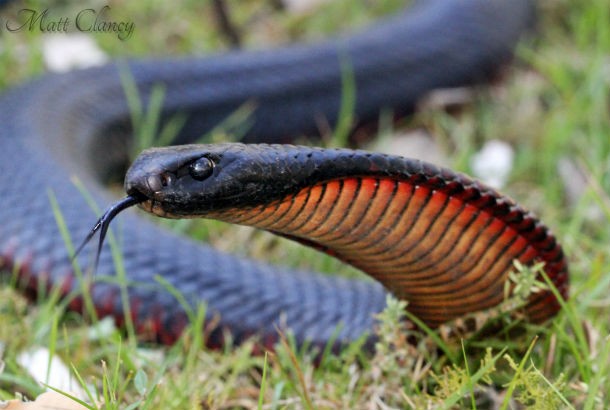 Source: australiangeographic.com.au, Image: Wikipedia
Source: australiangeographic.com.au, Image: Wikipedia The red-bellied black snake is a species of elapid snake native to eastern Australia. Though its venom is capable of causing significant illness, a bite from it is not generally fatal and is less venomous than other deadly Australian snakes. It is common in woodlands, forests, and swamplands of eastern Australia. It is one of the country’s best-known snakes, as it is common in urban areas along the eastern coast and has an average length of 1.5 to 2 meters.
Mulga snake (King brown snake)
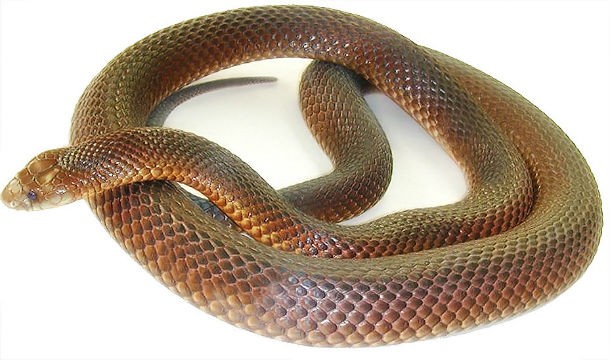 Source: australiangeographic.com.au, Image: commons.wikimedia.org
Source: australiangeographic.com.au, Image: commons.wikimedia.org A bite from this snake would be treated with black snake anti-venom. As with many Australian snakes the color is variable, with most specimens being mid-brown, some have a coppery tinge, and others are quite dark. Often, each individual scale has a dark and a light area giving the snake a subtle pattern. King browns are robust snakes with a wide head and large specimens will reach a length over 2.5 meters.
The Dugite
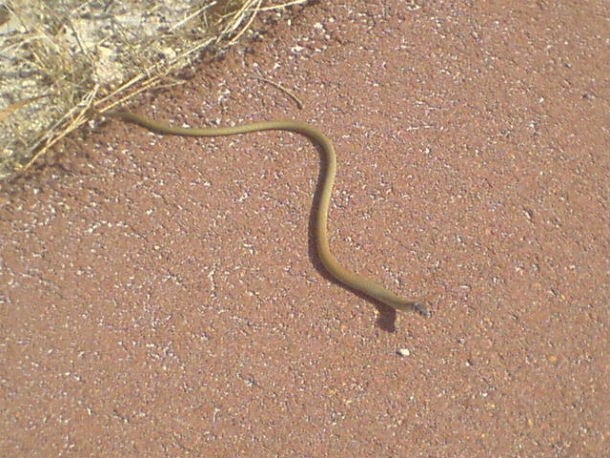 Source: australiangeographic.com.au, Image: commons.wikimedia.org
Source: australiangeographic.com.au, Image: commons.wikimedia.org Well known to southwestern WA residents, the dugite has made itself at home around urban and semi-rural areas, drawn to the prevalence of its favored prey—the house mouse. The dugite is a species of venomous, potentially lethal, snake, and a member of the Elapidae family.
Cone shells
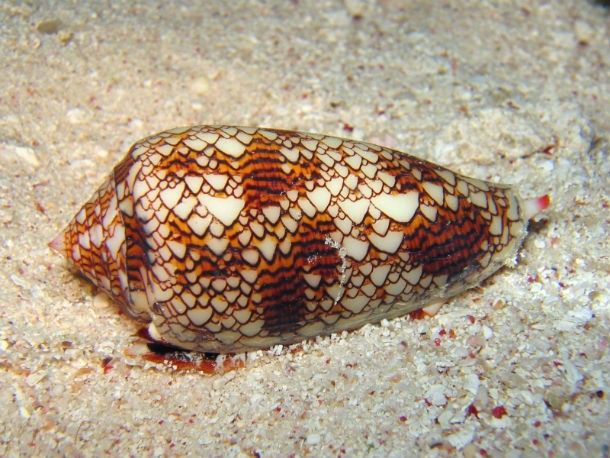 Source: australiangeographic.com.au, Image: Wikipedia
Source: australiangeographic.com.au, Image: Wikipedia Cone shells, also known as killer cone snails, are notorious for possessing a very powerful sting which they use to capture prey. Many people have been fatally wounded when handling live cones, especially those that feed upon mollusks and fish.
Common death adder
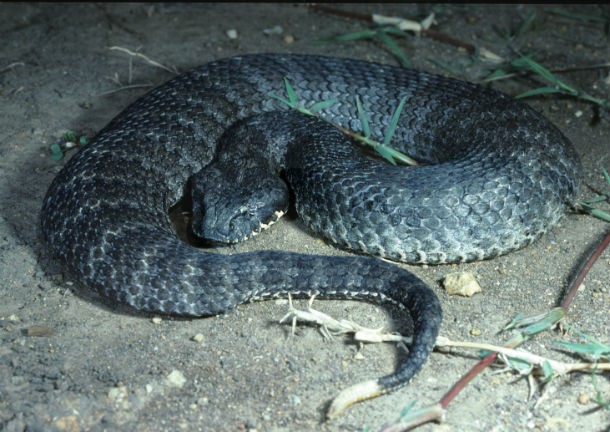 Source: australiangeographic.com.au, Image: Wikipedia
Source: australiangeographic.com.au, Image: Wikipedia There are several species of death adders in Australia but the common death adder is the only one found in Sydney. They have relatively large fangs and toxic venom and, before the introduction of anti-venom, about sixty percent of their bites to humans were fatal.
Coastal taipan
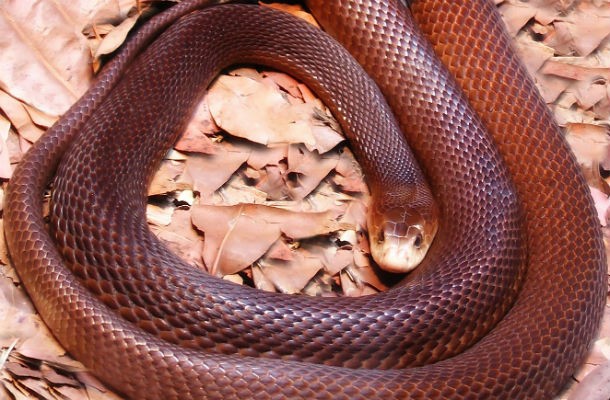 Source: australiangeographic.com.au, Image: commons.wikimedia.org
Source: australiangeographic.com.au, Image: commons.wikimedia.org The coastal taipan is a species of large, highly venomous snake of the Elapidae family. It is native to the coastal regions of northern and eastern Australia and New Guinea. According to most toxicological studies, this species is the third-most venomous land snake in the world.
Blue-ringed octopus
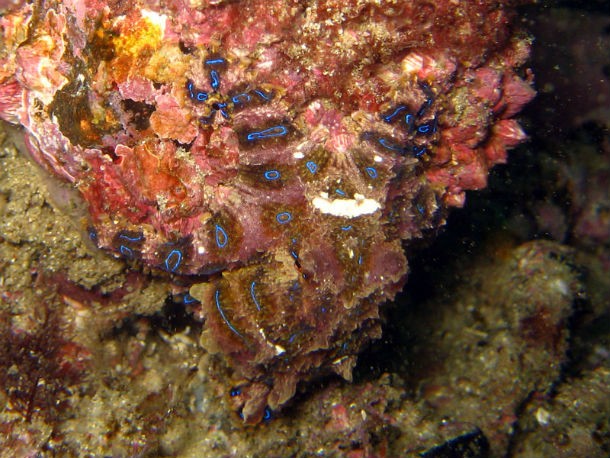 Source: australiangeographic.com.au, Image: Wikipedia
Source: australiangeographic.com.au, Image: Wikipedia The blue-ringed octopus is recognized as one of the world’s most venomous marine animals. However, and despite being considered one of the deadliest animals in Australia, this small octopus has been responsible for only three recorded deaths in the twentieth century.
Sydney funnel-web spider
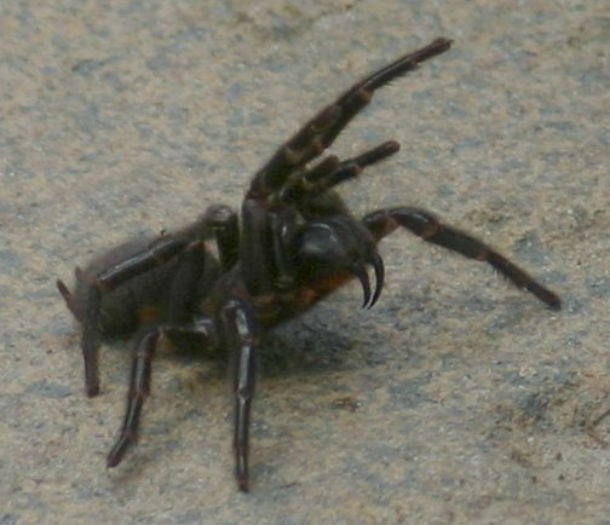 Source: australiangeographic.com.au, Image: Wikipedia
Source: australiangeographic.com.au, Image: Wikipedia Probably the most notorious of all spiders, Sydney funnel-webs have a fearsome reputation. Most of this is deserved, but some is exaggerated. It can be found within a 100 km (62 miles) radius of Sydney, New South Wales, Australia, and according to science its bite can cause serious injury or even death in humans if left untreated.
Saltwater crocodile
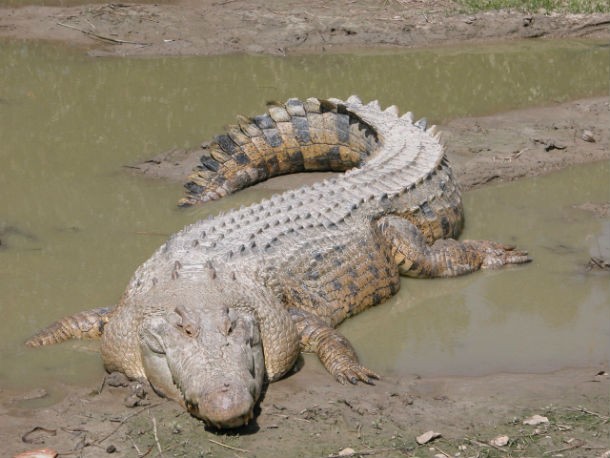 Source: australiangeographic.com.au, Image: Wikipedia
Source: australiangeographic.com.au, Image: Wikipedia The intimidating-looking saltwater crocodile has a wide snout compared to most crocodiles. However, it has a longer muzzle than the mugger crocodile and its length is twice its width at the base. It’s responsible for multiple attacks (some of them fatal) in Australia, where it’s considered one of the most deadly animals.
Eastern brown snake
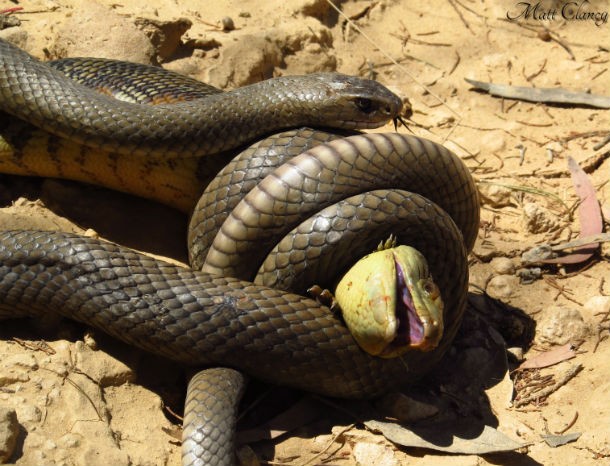 Source: australiangeographic.com.au, Image: commons.wikimedia.org
Source: australiangeographic.com.au, Image: commons.wikimedia.org The eastern brown snake is widespread throughout eastern Australia, from northern Queensland to South Australia, with isolated populations occurring in central and western parts of the Northern Territory. This medium-sized snake, with a slender to moderate build and a smallish head barely distinct from the neck might not look as intimidating as other snakes but its bite is one of the deadliest in the world since it’s considered the second-most poisonous animal in the world.
Bull shark
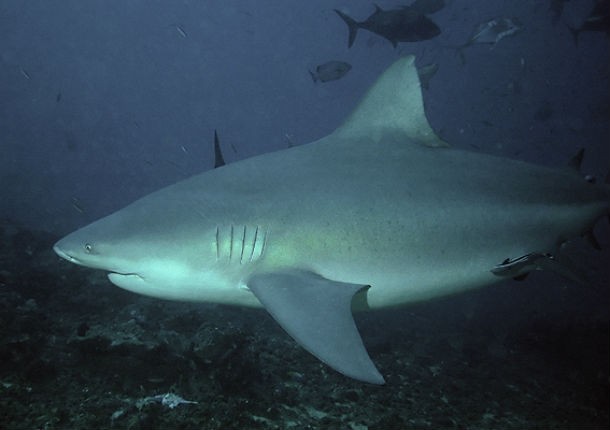 Source: australiangeographic.com.au, Image: Wikipedia
Source: australiangeographic.com.au, Image: Wikipedia According to the Australian Shark Attack File, kept by researchers at Sydney’s Taronga Conservation Society, there have been 1,003 shark attacks in Australia since records started being kept in 1791, and 232 of them have been fatal. All told, about one-quarter of shark attacks are fatal, with the majority of them coming from the meanest shark of all: the bull shark.
Irukandji jellyfish
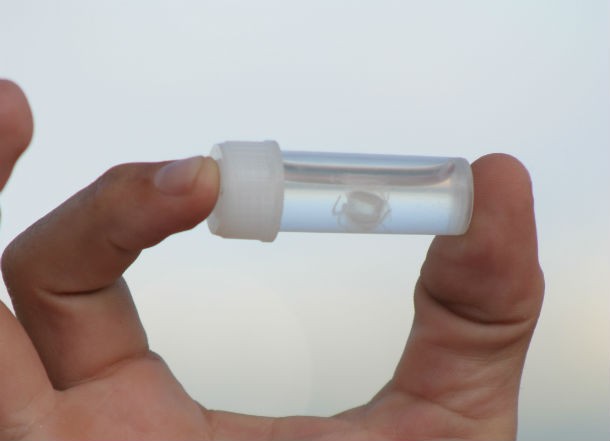 Source: australiangeographic.com.au, Image: Wikipedia
Source: australiangeographic.com.au, Image: Wikipedia Irukandji jellyfish are tiny but extremely venomous jellyfish that inhabit the waters off Australia. They are able to fire their stingers into their victim, causing symptoms collectively known as Irukandji syndrome. An interesting thing about the Irukandji jellyfish is that it also has stingers on its belly whereas most jellyfish have stingers only on their tentacles. Biologists have yet to discover the purpose behind this unique characteristic.
Honeybee
 Source: australiangeographic.com.au, Image: Wikipedia
Source: australiangeographic.com.au, Image: Wikipedia Even though honeybees are not considered some of the most deadly species in general, it looks like in Australia they are responsible for one to two deaths annually. It’s estimated that up 3% of the people in Australia are allergic to apitoxin which is the venom produced by honey bees.
Box jellyfish
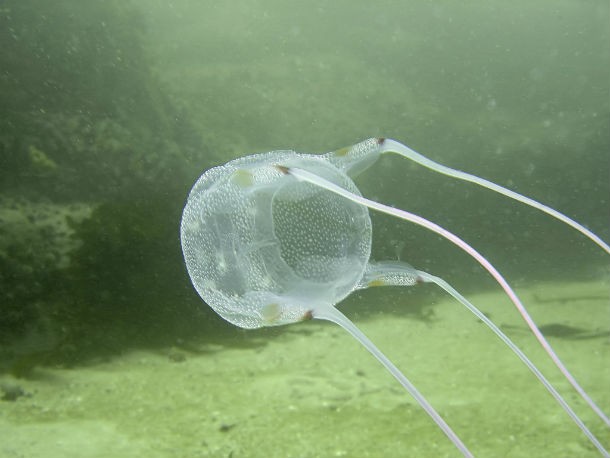 Source: australiangeographic.com.au, Image: Wikipedia
Source: australiangeographic.com.au, Image: Wikipedia The Indo-Pacific or Australian box jellyfish is claimed to be the most venomous marine animal known to man and its sting is often fatal. This extremely poisonous marine stinger frequents Australia’s northern oceans all year round. However, it is particularly dangerous during the wet season, from about November to April.



























